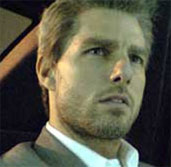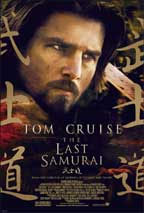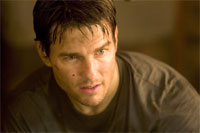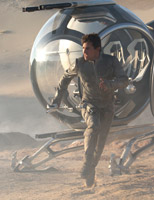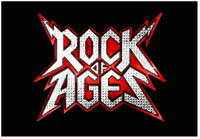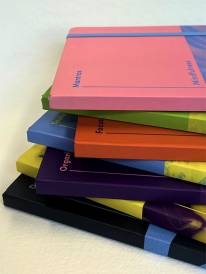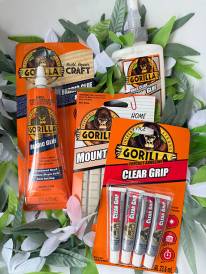Tom Cruise Edge Of Tomorrow
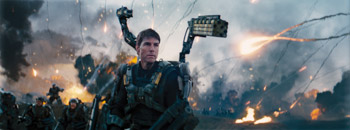
Tom Cruise Edge Of Tomorrow
Cast: Tom Cruise, Emily Blunt, Bill Paxton
Director: Doug Liman
Genre: Action, Sci-Fi
Rated: M
Running Time: 113 minutes
Synopsis: The epic action of 'Edge of Tomorrow" unfolds in a near future in which an alien race has hit the Earth in an unrelenting assault, unbeatable by any military unit in the world.
Major William Cage (Cruise) is an officer who has never seen a day of combat when he is unceremoniously dropped into what amounts to a suicide mission. Killed within minutes, Cage now finds himself inexplicably thrown into a time loop"forcing him to live out the same brutal combat over and over, fighting and dying again…and again.
But with each battle, Cage becomes able to engage the adversaries with increasing skill, alongside Special Forces warrior Rita Vrataski (Blunt). And, as Cage and Rita take the fight to the aliens, each repeated encounter gets them one step closer to defeating the enemy.
Edge Of Tomorrow
Release Date: June 5th, 2014
About The Production
Cage: What I'm about to tell you sounds crazy, but you have to listen to me. Your very lives depend on it.
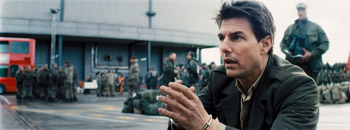 In 'Edge of Tomorrow," the world is at war with an indefatigable alien force no army, let alone individual, can conquer, and the greatest battle is still to come. Countless men and women will fight and all will be lost to these 'Mimics," unless the United Defense Force's least likely recruit can succeed in employing a most implausible strategy: Live. Die. Repeat. In the film, Tom Cruise plays Major William Cage, a military PR man who's never been to the front line but who, thanks to his ill-advised threat to a four-star general, ends up trapped in an alien-induced time loop, fighting for his life…and death.
In 'Edge of Tomorrow," the world is at war with an indefatigable alien force no army, let alone individual, can conquer, and the greatest battle is still to come. Countless men and women will fight and all will be lost to these 'Mimics," unless the United Defense Force's least likely recruit can succeed in employing a most implausible strategy: Live. Die. Repeat. In the film, Tom Cruise plays Major William Cage, a military PR man who's never been to the front line but who, thanks to his ill-advised threat to a four-star general, ends up trapped in an alien-induced time loop, fighting for his life…and death.
Director Doug Liman was drawn to the project by the extreme and extremely unusual circumstances in which Cage finds himself. 'The concept of this really unique time loop hooked me in," he says. 'It opened everything up and created an opportunity to explore what was interesting about Tom Cruise's character and to witness, day after day of the same day, what takes Cage to the brink. It also forces him to become not only the soldier, but the man, he has to be. When I find a project like this, that has a deeper meaning conveyed with tremendous action and great humor, that's a movie I want to make."
Cage's unusual situation stems from his first"and seemingly last"battle with an alien. He quickly loses, and should lose his life, but has the unique ability to 'reset" the day, waking once again in the exact location, at the exact moment, he did that morning. Justifiably, utterly confused, Cage can't understand why no one else seems to be aware of the horrific events that already happened. Rather, they are prepping for the very fight they unknowingly have already lost.
Tom Cruise says he was intrigued by these wholly unforeseen, highly undesirable circumstances and the way his character reacts to them. 'The structure of the story and the way the time loop works allow the audience to come in, understand the rules, and then go right along with Cage on a constant accelerative progression. Even though he is living the same day over and over, it never feels the same because his behavior always changes; he always moves the action forward."
Doug Liman expands, 'Everybody else is going to keep doing the same thing; the only thing Cage has control over are his own actions."
Emily Blunt stars as the soldier who makes it possible for Cage to maintain that forward momentum: Sgt. Rita Vrataski, the resistance's greatest warrior. 'I was really excited to play someone as tough, badass and physically dangerous as Rita. But when I read the script, mixed in with this very cool story and intense action sequences I also found a lot of laughs, as well as incredible determination and perserverance of the human spirit."
'Edge of Tomorrow" is based on the Japanese light novel All You Need is Kill, by author Hiroshi Sakurazaka. Producer Erwin Stoff was given the book by producer Tom Lassally, and immediately saw its potential as a film. 'I knew it would make a fantastic large-scale feature," Erwin Stoff recalls. 'It's exactly the kind of movie I love to make"big, exhilarating action with a really interesting narrative structure. I really liked the notion of someone being caught up in a war where the stakes are the very survival of humanity, and the character has to develop both the physical and emotional skillsets in order to make a difference."
Producer Jason Hoffs, whose Viz Media published the novel in the U.S., says, 'I love heroic stories, and this one also had an elegant three-act dramatic structure, so it lent itself beautifully to the big-screen form."
The unexpected pairing of two people wholly reliant on one another, despite only one of them being able to remember they've ever met, allowed for a good deal of humour, especially between Cage and Rita. Screenwriter Christopher McQuarrie notes, 'Cage begins as a self-serving media spin doctor who initially sees Rita as a means to an end. But she has unmatched combat experience and understands his situation better than he does"in short, she's the key to ending his nightmare. Meanwhile, she starts every day wanting nothing to do with him." Cage quickly realises his usual charm won't work on her, and he'll have to find another way to win her over. 'He must break through her carefully constructed emotional wall"over and over again."
'I thought it was the most original screenplay about combat I had ever read," remembers producer Jeffrey Silver. 'I loved the really original way he keeps replaying the same day in this time loop, which often comes out in a very funny way, and I also felt it worked on the most basic, human level with characters who have a really unusual relationship."
The story takes place primarily in London, Paris and the French coast and countryside. To capture the gritty, visceral, war-torn look the filmmakers envisioned, they shot nearly everything at Warner Bros. Studios Leavesden, making theirs the first production at the newly renovated studio lot.
One notable exception, occuring near the start of the film, is the arrival of Cage at the United Defense Force (UDF) headquarters. For the first time ever, a film company was permitted to land a helicopter in the middle of London's iconic Trafalgar Square. The next time Cage emerges from a helicopter, he is outfitted in the film's distinctive battle armor: the ExoSuit. The uniquely constructed suits were among the film's most striking design elements.
'I had the most amazing collaborators on this film," Doug Liman raves. 'In terms of scale, this is the biggest film I've ever made. I've never made a sci-fi movie, or a story about time travel, and this one has both and a lot more. Both on and off screen, everyone was completely committed to taking chances and making the most compelling film possible, and I think it really shows."
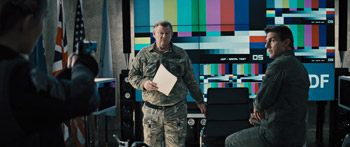 Rita: Come find me when you wake up.
Rita: Come find me when you wake up.
When we first meet Major William Cage, he is a slick public relations officer in the U.S. army, a post he took up upon the demise of his career in advertising thanks to the global conflict. He's never had an injury bigger than a papercut in his white-collar world, and can't even stand the sight of blood. When he finds himself about to join the UDF troops on the battlefront of the final push in the war"ironically dubbed Operation Downfall"he is not just unprepared, he is terrified.
Tom Cruise relished creating a real anti-hero, the ultimate underdog, a soldier with no possible means of surviving"let alone completing"his mission, and no real desire to. 'Cage was a really fun character to play," he says. 'He's in the military, but he's not really a military guy; he's the talking heads' face of the war and he's not the least bit heroic. In fact, he's not even a reluctant hero, he's a coward who'll say anything to get out of the fight. And now he has to live through this bloody battle over and over. Every time he wakes up, his worst nightmare begins again."
'Unlike Cage, Tom Cruise is fearless," Doug Liman says. 'He will try anything, do anything. He threw himself into the part even when his character was being humiliated or killed in some crazy way. He cared so much about the movie and worked so hard, that in and of itself was inspiring to everyone around him."
'I've wanted to work with Doug Liman for a long time," Tom Cruise offers. 'His films always have the kind of character journey that I enjoy. He's able to maintain a tone and an intensity that keep you invested, and he imbues the drama or the action with a buoyancy and a tremendous amount of humanity and humor. I like to put everything of myself into my work and he does as well, making it great fun to collaborate with him every day." 'Tom Cruise brings an unparalleled amount of effort and energy to his work," Erwin Stoff says. 'He has great chops and true athletic ability, and he comes with a full 360 degree view of how movies are made."
Cage's strange ability to turn the clock back only begins to make sense to him when he is able to partner with the one person who seems to understand: Sgt. Rita Vrataski. 'Cage and Rita lead the charge together in this story," Tom Cruise allows. 'It's a total partnership; they may start out as unlikely allies, but they both discover they won't survive without each other." 'I'm committed to strong female characters, and I think Rita is the strongest in any of my films thus far," Doug Liman states. 'She is a true veteran combatant who has led the charge and killed thousands of Mimics."
For her heroics in previous battles, the media has crowned Rita the Angel of Verdun, while the troops refer to her as the Full Metal Bitch. 'Now, she must also be a mentor to Cage," the director continues, 'training him to be as strong a fighter as she herself is, or they'll have no hope of winning the day. Emily Blunt came to the table with incredible strength of character and was every inch the warrior Rita was reputed to be."
Emily Blunt notes that, despite Cage having enlisted Rita to help him, 'she's really using him because he's able to reset the day, and she sees this as an invaluable weapon. Through his experiences, she can change tactics in order to get further along each time and hopefully go on to survive the battle and then win the war."
The story's conceit of replaying the day posed one of the more unusual tasks Emnily Blunt faced in portraying Rita who, each new day, doesn't remember Cage or anything that happened; he has to start over with her every time he starts the day again.
'She was always meeting Cage for the first time, so building a character whose interactions with another existed in an environment that was essentially the same again and again made it a challenge to progress the relationship," she relates. 'How does she change toward him, how does their familiarty grow if she can't remember him? It was tricky for me to play that and to find the right measure of intimacy."
Tom Cruise also found the one-sided relationship in the film to be interesting to play: 'Cage comes to care for her, but she can't reciprocate"for her, it's always just been that one day. That added a great layer to the connection between the two that was really fun to explore." Doug Liman's style of directing aided Emily Blunt in conveying even the subtlest of alterations in her character. 'Doug Liman was exhilarating to work with, I never knew what he was going to throw at me or what shot he'd want to try next, and that made it possible for me to really find the different layers in Rita," she says. 'He also veers away from things ever looking too perfected or glossy; instead, there's a messiness and a humanity that allow him to capture very spontaneous moments, and I think audiences can feel the truth in that."
Doug Liman felt she and Tom Cruise hit the mark. 'Both Tom Cruise and Emily Blunt are fantastic actors. Despite all the dramatic elements surrounding the story, many of the film's more humorous moments come from their great chemistry together."
'Emily Blunt was terrific," Tom Cruise adds. 'I love what she did with Rita, it was perfect for this journey. You see and feel her humanity, and it's quite moving. On top of that, Emily Blunt's never done action, but you'd never know it. She was thrown into the deep end and it was no easy feat, but she was wonderfully uncompromising. She's just a brilliant actress and she has a great wit. It was a pleasure to work with her."
The admiration was mutual. Emily Blunt offers, 'I've never met anyone with such a commitment to making the best movie he can. Tom Cruise strived for the best version of every moment, every scene, every day. He played Cage in a way that wasn't at all whiny or tedious; even though the character was useless and inept at first, he tried. I think that makes him all the more compelling to watch."
Farell: Private Cage is a deserter. I am making you all personally responsible for his deliverance.
He will be combat ready at oh-six-hunny tomorrow.
J Squad
Following his altercation with the brass at headquarters, Cage finds himself at Heathrow Airport in London, which has been commandeered by the UDF as military headquarters. One quick look around him tells him something has gone terribly wrong, and no amount of slick PR language will get him out of the mess that it got him into in the first place. Railroaded by his superiors, he is now under the command of Master Sgt. Farell, a military man through and through, who deflects Cage's every attempt to wriggle out of his new assignment.
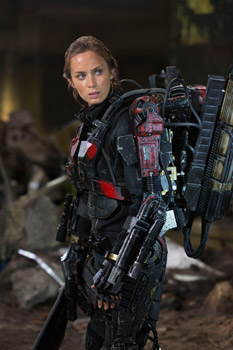 Tasked with shaping up Cage, whom he is informed is a private attempting to desert, Farell oversees the J Squad, Cage's new company of misfits. Bill Paxton plays the proud, lifelong GI eager to lead his team into combat.
Tasked with shaping up Cage, whom he is informed is a private attempting to desert, Farell oversees the J Squad, Cage's new company of misfits. Bill Paxton plays the proud, lifelong GI eager to lead his team into combat.
'Sergeant Farell is getting his troops ready for a massive counter-attack in France that he believes is the last stand in preventing the aliens from annihilating mankind. When I read the script, what impressed me most was the imagination, the scope and scale of the story," Bill Paxton says. 'My character says, -There is no courage without fear.' One doesn't exist without the other. To me, that is the crux of the story. However, despite the life-and-death situation, there are moments of humor and levity."
Resembling a collection of ex-cons, J Squad is comprised of six disconnected, dysfunctional soldiers: Skinner, Kimmel, Griff, Ford, Kuntz and Nance. Says Jeffrey Silver, 'The J Squad looks like the last group you'd think of bringing into the war with you, but they're pretty gung-ho to get into the fight."
Jonas Armstrong plays Skinner, a street-smart Brit who dislikes Cage from the moment they meet, going so far as to pick a fight with him. The actor was given little time to prepare for the scene, which was actually added on the day it was shot. 'I didn't know whether to laugh or cry," he recalls. 'An immediate panic flew into me because all I could think was, -What if I punch one of the biggest film stars on the planet?' I was nervous, but Tom Cruise was super and made it all so easy. He told me to be as aggressive as I could. It turned out to be one of my best experiences of the whole shoot."
Tony Way is Kimmel. Not the most athletic of the bunch, Kimmel, Tony Way says, 'overcompensates for that. I think he realises he wouldn't have made it this far in the war if he wasn't doing something right, though." Right or wrong, Kimmel also chooses to go mostly 'commando" into battle. 'He provides some comic relief in some intense situations," the actor grins.
Griff is an eccentric guy who offers his opinion freely, even when he's not asked for it. Kick Gurry, who plays the role, says, 'He is probably the guy you want to fight next to, because he's a total nut job. So, he's either gonna get killed, or save your life."
Dragomir Mrsic plays the silent but observant Kuntz, a soldier of few words who is ready and willing to fight to the finish. Dragomir Mrsic notes, 'Kuntz says it all with his expressions. War affects people in strange ways, and Doug thought it would be effective if he didn't speak. Cage doesn't know what to make of him."
Ford, the youngest member of J Squad, is a thug who thinks he knows it all. Unlike his character, actor Franz Drameh was eager to pick up what he could from the veteran actors on set, especially Tom Cruise. 'I've always been a fan of Tom Cruise's," he says. 'It was great to observe his amazing work ethic and passion. He is so efficient; I was able to learn a lot from just watching him."
The lone woman in J Squad, Nance, is played by Charlotte Riley. With a broken nose and browned teeth, the actress is almost unrecognisable. 'Nance is in a male-dominated world, but she lets the guys know she is just as tough as they are, if not more so," Charlotte Riley remarks. To take her character's offbeat looks even further, Charlotte Riley says she 'decided to grow my eyebrows into these fab `80s bushy brows. So that, along with my dreadlocks, allowed me to feel a real transformation in becoming Nance."
'In a relatively limited amount of screen time, the actors who make up the J Squad all created very distinct personalities," Doug Liman says. 'I think the audience will be rooting for them."
Before Cage ever finds himself thrown in the barracks with the lowliest of the enlisted troops, he makes the grave miscalculation that lands him there by getting on the wrong side of a four-star commander, General Brigham.
'Because Cage has done such a good PR job spinning the war, General Brigham"played brilliantly by Brendan Gleeson"wants him reporting from ground zero, giving people around the world a window onto the battleground," Tom Cruise explains. 'He wants everything positioned so this so-called turning point comes off well in the public eye."
Unfortunately for Cage, in trying to turn down what he perceives as the general's request, he takes a very bad turn and proceeds to anger and offend him instead, setting off events that will alter Cage's life"and everyone else's"forever, one way or another.
Cage: I'm not a soldier.
Rita: Of course you're not. You're a weapon.
As if preparing for a real battle, Tom Cruise and Emily Blunt started training well in advance of the start of principal photography on 'Edge of Tomorrow." According to Doug Liman, 'Tom Cruise and Emily Blunt began working out months ahead of shooting. They both took it very seriously. The first day of shooting, they were both ready for the action the film required, and that is a dream come true for any director."
Nevertheless, Emily Blunt says, 'You can train all you want, run a million miles, and I don't think anything quite prepares you. You just have to get used to it. And it's hard. Rita's fight style is very aerial-based"lots of sliding under alien tentacles, jumping, flipping over them, slicing as she's in the air. We wanted it to look intense, but yet there was a kind of beauty to it. Trying to capture the choreography and the sheer skill with which she fights was a tremendous challenge."
'It was incredibly demanding," Tom Cruise admits. 'And on top of it, at times I was shooting seven days a week, going between first and second unit."
Stunt coordinator Wade Eastwood choreographed the exceedingly intricate fight sequences executed throughout the film by Tom Cruise, Emily Blunt and the rest of the cast, as well as trained them to do the stunts. Training was not only vital because of the specifics of the action, but also due to how the actors would be outfitted for battle.
In conceiving and executing the armor and weaponry the soldiers would wear in battle, Doug Liman was very specific with production designer Oliver Scholl and costume designer Kate Hawley: any creative leap of armor technology had to appear obtainable in the near future, similar to what defense programs around the world are exploring today.
Doug Liman elaborates, 'We were looking for something high tech, but in the style that the military would arrive at. The military is not trying to sell their product to anyone, so they have a much more utilitarian approach and attitude to design. That is how I wanted the armor to look, simplified and raw, not like something sleek." The result was the unforgettable look and feel of the multi-purpose ExoSuit.
Doug Liman also wanted the suit to expose the human form so the characters could be seen in them, not covered up by them. And, because the cast would need to run, fight, jump and crawl in them, it needed to be designed as a moveable, articulated piece of sophisticated puppetry, operated solely by the actor wearing it. The suit would look real because it was.
Oliver Scholl and his team developed various ExoSuit concepts, working in tandem with head ExoSuit builder Pierre Bohanna to ensure form and function: initial 2D and 3D concept art led to an aluminum prototype frame with variable hinges and pivot points to determine what the rules of the suit were. Hawley then collaborated with the team on the aesthetic details and proportions of the suits, the color palettes and surface treatments. Careful integration was needed between the costume and art departments and props to provide unity, practicality and continuity between the ExoSuits and the weaponry.
The end result complemented the multiple axes of human joints, so they were able to move and bend as the body does. A foam mock-up was sculpted on top of the frame, then presented to Tom Cruise.
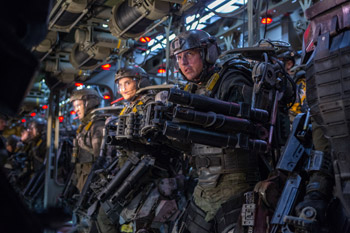 Tom Cruise relates, 'I came in a couple of months before we started and did a lot of R&D on the ExoSuit, just the frame of which weighed 60 to 100 pounds and, depending on the armament, could go up to anywhere from 120 to 125. It was a real test of mind over matter, something you never fully conquered. But that worked perfectly for the character." When creating the ExoSuit and battle fatigues for Cage, Kate Hawley and Tom Cruise collaborated from the get go. Says Kate Hawley, 'As well as constantly adapting the suit practically to support Tom Cruise's performance, one of things Tom Cruise said was he wanted his armor to evoke the imagery of a war painting or war photography, where there is a bleak, heroic romance to it and, at times, humanity."
Tom Cruise relates, 'I came in a couple of months before we started and did a lot of R&D on the ExoSuit, just the frame of which weighed 60 to 100 pounds and, depending on the armament, could go up to anywhere from 120 to 125. It was a real test of mind over matter, something you never fully conquered. But that worked perfectly for the character." When creating the ExoSuit and battle fatigues for Cage, Kate Hawley and Tom Cruise collaborated from the get go. Says Kate Hawley, 'As well as constantly adapting the suit practically to support Tom Cruise's performance, one of things Tom Cruise said was he wanted his armor to evoke the imagery of a war painting or war photography, where there is a bleak, heroic romance to it and, at times, humanity."
Oliver Scholl, Kate Hawley, Tom Cruise and the ExoSuit team went through great pains perfecting the suit. From the helmet to the footwear, everything had to sync up, especially because Tom Cruise, Emily Blunt and many of the other actors were performing their own stunts.
Seventy hard material ExoSuits were handcrafted during filming; 50 soft material suits were also made. Every ExoSuit was manufactured on site from 200 hand-cast components. At the peak of ExoSuit production, the casting workshop was creating 650 components per day, including 170 parts, such as nuts, bolts and screws, which were used to complete each one. Each piece would come out of the mold shop and go into the fabricating shop where they were sanded, painted and cleaned up. There were three different types"grunts, tanks and dogs"and each one had weapons integrated into the design, from the dogs' rocket-launching guns that appear as if they are wings emerging from the suit to grenade launchers, and from the tanks' huge machine guns to the grunts' smaller pistols.
'Just building the ExoSuits alone took four to five months," Doug Liman says, 'so once we committed to a design, we couldn't come up with a new idea and expect it to happen any time soon.
'Tom Cruise got the first ExoSuit off the assembly line," he continues. 'He had already been training with weights to get used to carrying around the weight of the suit. It was all the tiny performance details that made it believable"even when you are just walking in the suit, you are performing. In the movie the suit is moving the human, but in reality the human is moving the suit."
'The ExoSuit created for Rita had to feel different from the other soldiers. Rita is a crusader, heroic beyond belief, but at the same time beautiful," Kate Hawley says. 'We wanted to avoid anything -girly' when creating her look, or that cat-suit sort of thing that can feel too -fantasy.' She had to have her own swagger and language that set her apart from the others and that was more personal, and that had to come across in the costume, like the rotor blade from a fallen helicopter that is her weapon of choice. She has a Joan of Arc quality about her, so we sprayed red slash marks on the chest of her suit"a nod to the novel"as if to say she had been to hell and back and lived to tell about it."
Emily Blunt states, 'Rita doesn't even wear a helmet in the film because she knows it's not going to help her. Now that is one tough lady. And there was something quite empowering about putting on that armor and marching along with 20 enormous guys behind me."
Putting the ExoSuits on the cast members was no easy feat. Each actor had his or her own personal team of four ExoSuit handlers who would strap the armor onto them. Tom Cruise made it his personal mission to cut down the time it took to get into the suit. 'When we were testing it out, it would take about 30 minutes to get me in it," he cites. 'If you have to take it off for any reason, that's 30 minutes we're not in production. So I told the team that by the time we started shooting, we were gonna be under a minute. I literally got stopwatches and started timing it. It became like a contest. And they did it; they got it down to 30 seconds."
When Hiroshi Sakurazaka, author of All You Need is Kill, visited the set during filming, Tom Cruise suggested he try on one of the ExoSuits. 'I didn't really have the physique or the stamina to carry the suit on my back," Hiroshi Sakurazaka relates. 'I could barely walk in it, let alone act or do anything else. Doug Liman put me in a scene as an extra, wearing the ExoSuit, and after just standing there for ten takes I was exhausted!"
Says Kate Hawley, 'Creating a fully-functioning ExoSuit was such a complicated process, but in the end we were all incredibly proud of the work we did. The intricacies were mind blowing. -Form follows function' was the lesson we learned in the end."
For the everyday fatigues, Kate Hawley incorporated the traditions of British officers, personalising each in the manner each character might adapt their uniform to make it their own"Rita's Doc Marten boots, Griff's shirt and Kimmel's teddy bear. She also incorporated logo arm designs from battles past, giving them a battered, bruised and broken-down look that was in stark contrast to the uniformed military personnel who didn't venture beyond their office walls. And, because the entire globe is at war with the Mimics, fatigues and uniforms had to have an international feel. Hawley sourced from around the world, intersecting designs and then unifying them with the United Defense Force branding featured on clothing and props throughout the film.
Since the world of 'Edge of Tomorrow" exists in a continual time loop, Hawley and her team faced additional continuity challenges. 'Many times on set we would be asking each other, -What loop are we in again?'" she laughs. 'So in a way, art imitating life sort of took over, sort of like Tom Cruise's character."
Cage: The invasion will fail, along with every
soldier you send in. We lose everything.
When Oliver Scholl first met with the filmmakers to discuss the overall look of the film, they stressed that, despite it being a movie about war and alien invasion, they didn't want it to be apocalyptic. Oliver Scholl conveys, 'We wanted it to be clear that there was still a world left to be saved."
Doug Liman, a fan of classic World War II movies, sought to evoke that era while still creating a somewhat futuristic world for a contemporary audience. Therefore, Oliver Scholl created an environment that provides hints that it is not present day, as evidenced by some of the technology, but yet still feels familiar. For what amounts in the film to a two-day period, albeit relived again and again, the design team would create 47 sets"27 exteriors and 20 interiors. And as the story takes place in the time loop, many of the sets were redressed or redesigned to correspond to the appropriate loop.
The entire film was shot in England, primarily at Warner Bros. Studios Leavesden. In addition to the facility's nine soundstages, which offer more than 1,000,000 square feet of stage space, there is a 100-acre backlot, making Leavesden the ideal place to create a large-scale beach invasion, a Heathrow Airport-based military compound complete with an interior combat range and drop ship, and a nearly deconstructed Louvre, among other sets or backdrops.
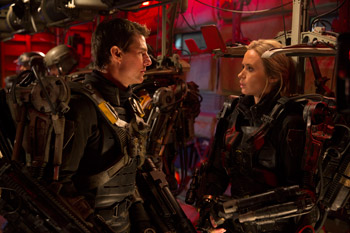 The Beach
The Beach
The 650-foot long by 500-foot wide backlot was nothing more than a vast grassy field until the 'Edge of Tomorrow" team got hold of it. The challenge was to create a beach reminiscent of Normandy, circa World War II. It took four months. The site was first bulldozed, and then 1300 tons of sand was shipped in. Holes and trenches were meticulously dug to create a battlefield, with input from Wade Eastwood's stunt department, who were designing the action sequences that would take place there.
The special effects department rigged the ground and sand for the battle explosions; it was especially difficult to keep the sand from turning to mud with all the moisture in the air, so set dressers had to constantly churn the sand to keep it fresh. Scattered among the pitted and trenched sand were fuselage and debris.
Surrounding this huge set was an 1800-foot green screen, which would later be replaced by extended environments that depicted the massive landscape and shoreline, along with 100,000 troops fighting in battle with the Mimics. The skies would be filled with military planes, drop ships, hover crafts, helicopters and missiles. To cover all the action, cinematographer Dion Beebe often had nine cameras going at once.
'Dion Beebe is an amazing talent and an incredible collaborator," Doug Liman underscores. 'He is one of the best DPs I've ever worked with and I would do it again in a heartbeat." The beach involved very complicated work. Doug Liman allows, 'We were probably on that beach for 35 days of the shoot, and the last day was right before Christmas. Now, England is rainy, we all know that, but we showed up and our beach was covered in snow. Jeff Silver, our incredible line producer, turned to me and said, -Maybe Mother Nature is telling us it's time to move on from the beach.'"
The Base
The filmmakers scouted Heathrow Airport in order to determine what they could and could not film there, according to airport regulations and the needs of the production. Heathrow was incredibly accommodating, but it is one of the busiest airports in the world, so the filmmakers decided it would be in their best interest to build a part of the airport themselves.
New skins were put up on the surfaces of the buildings at Leavesden, jet ways built, safety and traffic markings on the ground duplicated. Specialists from Heathrow worked closely with the art department and construction team to replicate the Heathrow tarmac. The airport set was so large, most of the cast and crew used golf carts to get around.
However, Doug Liman recollects that not everyone felt the need to. 'We were doing a scene with Tom Cruise and the actors from J Squad and about 40 extras, which called for them to jog from one end to the other, and when they got to the far end we'd cut, and they'd have to come back to reset. It was pretty far, but Tom Cruise just took off running. And suddenly 60 people were following him, racing back to the first position so that, instead of it taking five minutes to reset for the second shot, it took about 30 seconds. In fact, Tom beat the golf cart with the camera."
To turn the airport into a military base, they lined the area with army tents that would serve as a base of operations for the soldiers. Real military grade tents were used to dress the set. The interior combat range where Rita trains Cage to fight the Mimics was comprised of huge pieces of blasted, bullet-ridden concrete. Built inside a massive soundstage, this set was designed to have an industrial feel to it, and was one of the few sets in the movie where bright colors like red, yellow and orange were used. Most notably, the colors were used on the visually arresting, claw-like, steel 'mock" Mimics used in fight training. The brighter palette, when compared to the monochromatic grays and khakis used throughout the rest of the film, was intended to subtly indicate the high alert level during this tumultuous wartime, as well as show the potential toxicity of the environment.
However, before he's put in a moment of actual training, Cage is sent into battle with the rest of J Squad on a drop ship that flies them over the coastline and from which they literally drop via cables onto the sand. Scholl came up with the sophisticated design for the drop ship, which in exterior shots resembles a mix between an Osprey tilt-rotor and Chinook helicopter. He was excited when it became a reality due to a joint effort of special effects supervisor Dominic Tuohy and construction manager Paul Hayes, whose teams built and rigged the set, and Nick Davis, whose VFX team would later composite the ship's trap doors to open and drop the soldiers into battle, as well as duplicate the exterior of thousands of ships in flight.
On the practical set, the actors, in the ExoSuits, were actually hooked up to cables and dropped through the floor onto safety mattresses 15 feet below. The set was also rigged with hydraulics so it could shake and rock back and forth in the manner of a flight simulator. The cast endured a week of filming in this claustrophobic environment, clipped into a brace in their weighty ExoSuits, their feet dangling beneath them.
Paris
For the film's scenes in wartime Paris"all shot at Leavesden" Oliver Scholl designed a landmark in ruins: the Louvre. The visitors' center set had been blown to bits; huge concrete slabs had fallen atop dirt, debris and human remains; the rails of an escalator, that looked like it had been snapped in half, lead to nowhere, creating the illusion it was half above ground, and half below. Six operating waterfalls were built on the set to show the ongoing flood in the aftermath. And, as a nod to Sakurazaka's original novel, they included Japanese signage advertising an exhibit that had taken place at the museum before the alien invasion had begun.
One full side of the set was a green screen"the background environment would be extended by the VFX department to show the streets of Paris, utilizing previously shot scenic plate footage.
For a pivotal scene set on the Champs-Élysées, the company braved below-freezing temperatures to shoot nights on Oliver Scholl's Place de la Concorde backlot set. At 17 250 feet wide by 250 feet long, the newly constructed tank set was six inches deep and held 23 thousand gallons of water. Surrounding the set was a 28-foot tall green screen. It featured statues and iron gates in the same décor of the actual Place, and a keen eye will spot portions of Cleopatra's Needle as abandoned blown-out cars float by in the flooded street.
The production also ventured out of Leavesden. Visual effects plates were shot at Heathrow Airport, Saunton Sands beaches in Devon, and inside a car park in Vauxhall. Driving shots were orchestrated in Barton Stacey, Lavant Road in Sussex, and on the Millbrook racetrack, known for its state-of-the-art vehicular testing.
Cast and crew filmed in a variety of practical locations, including the Ministry of Defense Building at Whitehall and Horse Guards Avenue; Waterloo Bridge; a 1690s English Heritage farmhouse on 22 acres in Petersfield; the Coach & Horses Pub in Farringdon; and The Mall by Hyde Park. And, in what would be an extraordinary moment for all involved, 'Edge of Tomorrow" would make movie-making history in Trafalgar Square.
Trafalgar Square
During an early production meeting, says Erwin Stoff, 'Tom Cruise said, -Wouldn't it be a cool way to open the film with a helicopter flying over the Thames and landing in Trafalgar Square?' At that point, I looked over to our location manager, Sue Quinn, who had gone pale," he laughs.
Landing a helicopter in Trafalgar Square was a privilege that had never been granted to anyone in the past, apart from the British military, and only then in case of an emergency. Fortunately, the filmmakers had the support of London Mayor Boris Johnson. The Mayor's office worked in collaboration with the Greater London Authority, The Westminster Council, Transport for London, the Charing Cross Police Department, the Mounted Police, the Horse Guards, London Underground, The National Gallery and other authorities to execute the sequence.
In addition, the production's location department hand delivered 8,000 letters to businesses and residences within 700 meters of Trafalgar Square in order to assure all were aware of the intended shooting plans.
On the day of filming, the famous fountains in Trafalgar Square were turned off. Dion Beebe's team had placed 11 cameras on the ground and on rooftops to capture the scene. The police locked down the area and all traffic was diverted from Trafalgar Square. No detail was left to chance.
The RAF Puma Eurocopter used for shooting was based on the other side of the Thames, at the Oval Cricket Ground. From there, Tom Cruise boarded the chopper and rode it up the river, past the London Eye, Tower Bridge, Big Ben, and up Whitehall to land in Trafalgar Square. The main helicopter was followed by another Eurocopter that had a camera mounted on it to shoot the aerials. For several of the takes, Doug Liman was inside the helicopter with Tom Cruise, operating the camera himself.
Tom Cruise reflects, 'Landing a helicopter in Trafalgar Square was one of those exceptionally cool moments in a career spent in locations all around the world. We all got really excited to do it, and it was terrific that Doug Liman got in to shoot me live for the beginning. It was great fun for all of us."
'Shutting Trafalgar Square down and landing a massive Royal Air Force helicopter was one of those moments where you're like a kid again," Doug Liman beams. 'From a technical point of view, it was by far the most challenging thing I've ever done in my career, because we had three hours to do everything, no ability to rehearse it on-site, and once it's hovering on the ground, it renders any form of communication impossible because it's so loud. And we only had that morning, so what you get is what you get. If you need one more minute, you're never getting it. I thought to myself, -This is a once-in-a-lifetime opportunity; make the most of it.'"
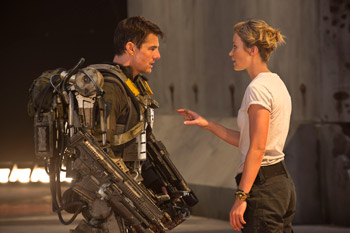 Cage: We are not equipped for what's out there.
Cage: We are not equipped for what's out there.
'Edge of Tomorrow" takes place during the final push in a global war against a seemingly impenetrable infestation of a hive-like alien race that has chosen to inhabit and take over Earth. The visual effects team had their work cut out for them.
'I'd worked with visual effects before"though hopefully audiences wouldn't necessarily have noticed," Doug Liman smiles. 'But I'd never done a film where any of the central characters were comprised entirely of visual effects, especially ones that have to fully interact with the actors."
Doug Liman had the benefit of working with visual effects supervisor Nick Davis. 'Nick Davis and I spent hundreds of hours figuring out alien movements, fight styles, everything. And he didn't just speak effects, he spoke story. I knew this project was going to be a crazy marriage of the real world, characters and action with a CG world, characters and action, and Nick Davis really helped guide me through that process."
Nick Davis says, 'Right from the get go decisions had to be made, due to the complexity of the battle sequences."
Doug Liman admits to 'agonising over the Mimics in order to make sure that they were specific entities with their own attributes. I never want to waste an opportunity to bring something interesting to life, especially my villains. So I had to approach the alien designs with that in mind."
The design of the Mimic was an ongoing and evolving process. Creating an original-looking alien was the real challenge. Says Erwin Stoff, 'It's harder than you think to come up with something new, and then when you do, you run the risk that it sort of feels random, not organic to your film. So, what we basically did was to really work on the story behind the Mimics. When your design gets driven by story, you're on much surer ground."
The team decided that the Mimics would have multiple tendrils that would come loose from their body during battle, like a javelin. But how would the Mimics move? What texture would they be? The filmmakers began their research and development for the Mimics, doing movement and animation studies. They had to determine how the Mimics and their human opponents would interact in combat.
'All of the varied types of Mimics have different personality traits," Nick Davis continues. 'Some are four-legged with tentacles that sort of spray off of them. Others move with incredible speed and dexterity. But they are all out to kill"an enemy whose speed and brutality are unmatched."
Emily Blunt, along with many of her cast mates, had to execute numerous fight scenes against a green screen, with combatants that weren't actually there. 'It took some getting used to, hurtling around on wires, swinging a huge sword but never actually impacting anything," she recalls.
VFX houses, including Framestore in London and Montreal and Sony Pictures Imageworks in Los Angeles, lent a hand at the creature design. The pivotal scenes involving Mimics were meticulously sketched out by VFX artists in pre-viz prior to shooting. On the set, on any given day, the VFX department had a team of six data wranglers capturing data and textures that were used as reference materials when creating the shots in post-production. Using digital video and high-resolution digital stills, the wranglers captured all the light and information on set, so that the computer artists could later recreate the same environment.
'One of our goals was to create VFX shots that were photo-realistic, so an audience member can't tell where the practical shot footage ends, and the VFX extension begins," Nick Davis states.
For the final pieces of post-production, Doug Liman worked with composer Christophe Beck, who created a score that captured the suspense, the action and the fun of Cage and Rita's extraordinary journey.
Edge Of Tomorrow
Release Date: June 5th, 2014
Have You Seen This?
MORE


